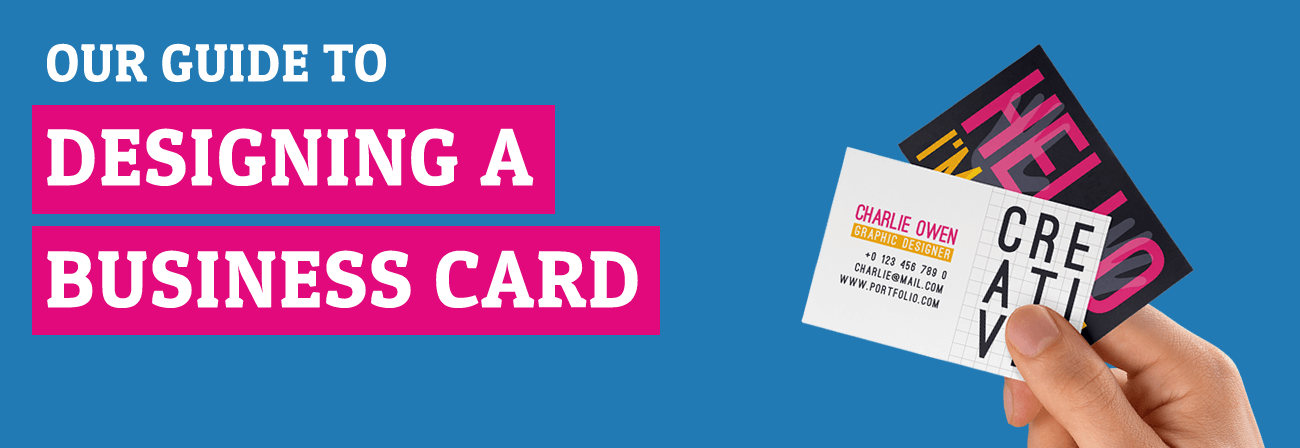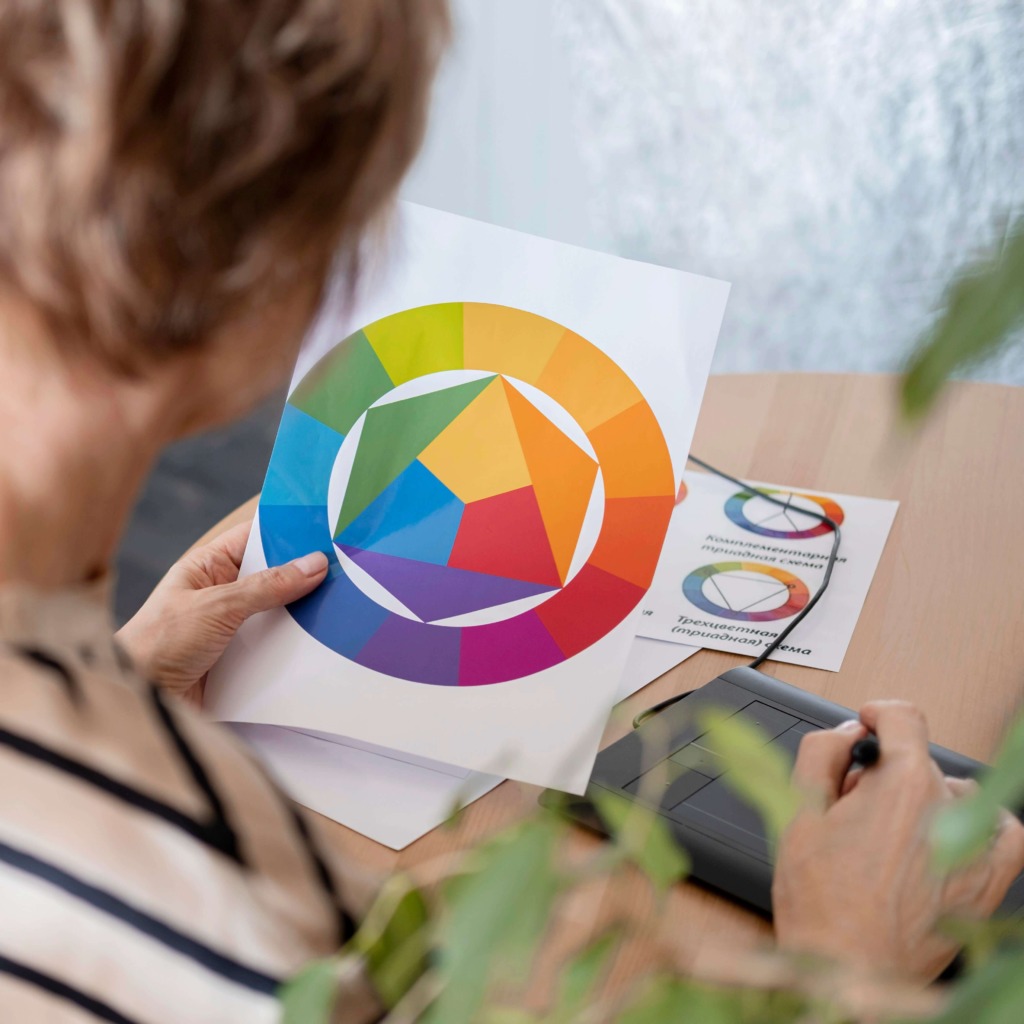Free nationwide shipping on all orders!
Simply, Affordable, Quality Print & Design in Staffordshire and the UK
Free nationwide shipping on all orders!
Simply, Affordable, Quality Print & Design in Staffordshire and the UK

Business cards are not just your conventional first contact point with someone you consider as a potential customer. Every day, business owners smartly use them as potent marketing tools.
Here are our best tips for crafting business cards that make an impact.
When you begin to create a business card design typically some important things are needed. We all know what they are and why they are important. Before you begin your design, make sure you have the information you wish to include such as your logo, contact details you wish to include and you have chosen business card size and stocks.
Doing this first will help when you begin the fun part of designing your personalised business card design read on as we work through a complete list of the most common tips and tricks when you are creating your design from scratch!
When we say pick the right style we can talk about the shape and finish you are looking for. For example, if you are a luxury business you may wish to consider spot uv or foiling to help carry that across. We offer a wide range of business card finishes and sizes and choosing the right size and finish before you start will you when you keep all of our other tips in mind
No matter the size and style you choose when designing your business cards, it is important that you only include the most important information. There is not a large amount of space and as such you would not want to overload the design. Keep it to essential information only, the most crucial contact information such as Your Name, Company Name, Job Title, Email Address, Web Address, social media links and of course your logo!
Like everything in the printing industry, some graphic design standards should be followed when designing your professional business cards. This would be the same no matter the size whether it’s standard business cards or square business cards.
These include:-
If you keep these in mind as part of your design process when you create your business card design, you will end up with good business cards!
We all want to make a good first impression and sometimes that is done by making sure your cards stand out. Whilst our Premium Cards are typically used horizontally there is nothing wrong with vertical business cards! Anything to help you stand out to your potential clients could be what gets you the work or that all-important connection.
We offer our business cards in a range of sizes such as 55mm Square Cards, Slim Cards, Premium or Standard sizes as well as Folded Business Card options for those that require more space with their business card printing service. Feel free to use our free blank templates once you have decided on your chosen size. and if you can not make up your mind find out more about Business Card Stocks and Sizes.

To make it easier for people to read the information you need to include when you create your custom business card design it’s crucial you do not shrink all this down to a point where it is unreadable once printed. Text or logos should be easily defined and interpreted. For example, we regularly see business cards where the URL of their web address is readable on screen but when it comes to production the font is that small which makes it hard to ascertain what it says.
When you create your own business cards leaving plenty of space is a good idea. Deciding if your perfect business card design needs to be single-sided or double-sided can help ensure there is plenty of room to let the design breathe and make sure the important stuff is seen.
Using the back of your business cards can be a great way to make business cards not only more eye-catching but also useful. For example, you could use the back to layout the design comfortably, adding QR codes, loyalty card schemes etc. Not only will this make them easy-to-use but also helps them want to keep them to hand.
Using colours that reflect not only your brand and compliment your logo – but also help set the tone is important. We talked about using the right colour palette earlier this is different. This is more than that. We all want to create business cards that make people want to keep your business card, they are only going to keep them if they resonate and talk to them.
A good example of this is the beauty industry. They typically use softer colours to create a sophisticated design that helps ease their customers into keeping their details.

Ok so you are making good headway! Stay with us!
We offer a wide range of card stocks suitable for business cards and you can read more about the options on our Mastering business card sizes and stocks – Your Ultimate Guide.
Each stock has its own benefits and is dependent on what look you are trying to create and how you plan to use them. Uncoated stocks are great when creating a business card with a loyalty card design. 350gsm silk is great as a stock perfect for folded business cards, but as a responsible print business, we would recommend 450gsm silk for a standard business card. 350gsm standard business cards can feel a bit cheap and pale in comparison!
We even offer some ultra-thick business cards stock – it does not suit everyone but it’s an option!
Especially when you add lamination which we will go into next!
So you have chosen the stock you want to print business cards on! Let’s get onto finishes – all paper or card stocks have their finish as standard. You can get creative to create a business card that’s a cut above the rest. You can laminate your cards with either a choice of Matt, Soft Touch or Gloss lamination to add not only a layer of protection and durability but add to the look of the card.
If you use Matt or Soft Touch Lamination you can make yourself some Spot UV Business Cards or even some Foil Business Cards to inspire your customers to use you. Knowing the creative finish you wish to use when you make a business card design.
This can not be understated. You have done all this work so far, collecting the information choosing the finish, and setting up the business card dimensions to create your custom cards. This is a vital step and can stop a reprint down the line when something is spotted by a fresh pair of eyes. Share the design with friends and family before committing to sending your business card to print.
The most common mistakes to look for include typos, grammatical issues and spelling errors.
We get it – we are all busy and time is always a sensitive issue!
Let us give you an example of why this is important so that you can understand why this is important. We recently welcomed a new customer across who had cards printed somewhere else before. We rang the main number on the card to discuss their requirements and there was no dial tone! We contacted our client back to advise them of this – to which they let us know that the number was wrong. They had previously had them printed for 18 months with those details and had been handing them out!
This is not pointing fingers at their previous printers – not by any means. But it does highlight the importance of proofreading!
So these are our best tips for designing a business card and they are the most crucial, choosing the right fonts and colours but that’s not all!
When we talk about the how – we are talking about what program to use! Nowadays design has never been easier for people to create their simple free business card designs. With the likes of Canva and Adobe Express and the advancements in online business card design, customers have thousands of templates at their fingertips.
Canva and Abobe Express are not the only online tools either there are a myriad of free business card makers to help you create free business card designs. Using design online tools is great for people looking to cut costs on professional design, most tools offer free business card templates.
At the moment – at least from what we can see Canva seems to be the most favourable online digital business card creator.
We are not going to go too in-depth about these tools here however most services that allow you to design business cards online allow you to download your design to send to your chosen print company.
As professionals within the design industry, we use the full Creative Adobe Suite but this naturally comes at a cost that is not suitable for most businesses. Like most professionals, we are creatures of habit to a degree however that’s not to say we don’t use Canva or online design platforms just not in the way most people do.
As designers, not just of business cards but as a whole we can use the range of free business card makers to create business card ideas and spot trends. It is just not what we would use to create them if we were to make your business card.
There is no right or wrong in the software you choose, we are not biased – well maybe a little. But at the end of the day, you should design your business cards using your own budgets and skill sets in mind. This is the same if you are a new business or a multinational corporation.
Well not everyone has the budget to use a professional to design their business cards for them, using a professional designer does come with some advantages – we know all the points we have discussed above and more! We have years of practice that only comes from actually doing it day in and day out. It frees your time – remember whilst online tools appear free and easy to use there are caveats to using them. It is your time as opposed to someone else’s and if design is not your thing you are more likely to make some crucial design mistakes.
It might be worth mentioning that if you and your competition are using the same tools for design you could quite easily create a design that’s super similar. Not great for helping you and your company stand out.
However, you choose to get the design for your business cards made be sure to use a print company that not only offers great value and service. This will give you further peace of mind!
